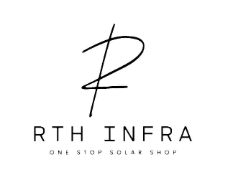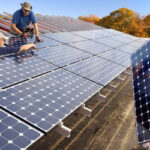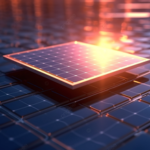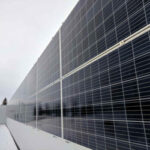Your Cart
- No products in the cart.
Subtotal:
₹0.00
BEST SELLING PRODUCTS
₹138,982.20

These inverters can combine the benefits of regular solar inverters with the flexibility of battery inverters into one piece of equipment. A hybrid inverter is a new option for homeowners who want to install a solar power system that can be expanded in the future to include other parts, such as a battery storage system.
The lifespan of a hybrid solar inverter can vary depending on several factors such as the quality of the product, the operating conditions, and the level of maintenance. On average, a well-maintained hybrid solar inverter can last between 10 to 15 years. However, it’s important to note that this is just an estimate, and individual cases may vary.
Yes, a hybrid solar inverter can work without a battery. In fact, hybrid solar inverters are designed to be versatile and can operate in different modes depending on the availability of a battery storage system.
When a hybrid solar inverter is connected to a battery, it can perform multiple functions. It can convert the DC (direct current) electricity generated by solar panels into AC (alternating current) electricity to power your home or business. Additionally, it can charge the battery using excess solar power and draw power from the battery when solar production is low or during nighttime.
However, if a battery is not present or not connected to the hybrid solar inverter, it can still function as a regular solar inverter. It will convert the DC electricity generated by the solar panels into AC electricity, which can be used to power your appliances or exported to the grid if permitted by your local regulations. The absence of a battery means that excess solar power will not be stored and used later, and you will rely solely on solar production during daylight hours.
Hybrid solar inverters are designed to handle grid failures or power outages in different ways, depending on their specific features and configurations. Here are a few common scenarios:
Grid-tie mode: In this mode, when the grid is available, the hybrid solar inverter operates by synchronizing the solar power generation with the grid. If a grid failure occurs, the inverter is programmed to disconnect from the grid and stop exporting power to protect utility workers who may be working on fixing the grid. In this case, the solar panels will not be able to generate electricity, and the inverter will not supply power to your home or business until the grid is restored.
Backup mode: If your hybrid solar inverter is connected to a battery storage system, it can provide backup power during grid failures. When the grid goes down, the inverter can automatically switch to backup mode and draw power from the battery to supply electricity to your home or business. This allows you to continue using essential appliances or maintain critical operations even when the grid is not available. The inverter will switch back to grid-tie mode once the grid power is restored, and it will start recharging the battery using solar energy.
Off-grid mode: Some hybrid solar inverters also have an off-grid mode that allows you to operate independently from the grid. In this mode, the solar panels generate electricity, which is used to power your home or business directly or stored in a battery system. This mode is typically useful in remote areas where grid connection is not available or during extended grid outages. However, it’s important to note that off-grid systems require sufficient solar capacity and battery storage to meet your power needs during periods of low solar production.
During excess solar production with a hybrid inverter, several possible scenarios can occur depending on the setup and configuration of the system.
Grid Feed-in: If the hybrid inverter is connected to the electrical grid, it can feed the excess solar energy back into the grid. This process is known as grid feed-in or grid-tie. The excess electricity is sent to the grid, and the utility company may provide credits or payments for the energy generated.
Battery Charging: If the hybrid inverter is equipped with a battery storage system, it can divert the excess solar energy to charge the batteries. This allows the energy to be stored for later use when solar production is low, such as during the night or on cloudy days.
Load Consumption: In some cases, if there is excess solar energy and the batteries are fully charged, the hybrid inverter can prioritize powering the electrical loads directly. This means that the excess energy is used to run household appliances and devices, reducing the reliance on grid electricity.
Curtailment: If none of the above options are available or feasible, and there is no immediate use for the excess solar energy, the hybrid inverter may have a feature called curtailment. Curtailment involves reducing the solar energy production to avoid overloading the system or wasting the excess energy. This is typically a last resort option and aims to ensure the stability and safety of the electrical system.
Yes, hybrid solar inverters can be suitable for commercial use. Hybrid solar inverters are designed to work with both solar panels and battery storage systems, allowing for greater flexibility and control over the electricity generated from solar energy. They are commonly used in both residential and commercial settings.
Yes, hybrid solar inverters are designed to be compatible with a variety of battery technologies. Their versatility allows them to work seamlessly with different types of batteries, each with its own characteristics and advantages. This compatibility is a significant advantage, as it enables users to choose the battery technology that best suits their needs, budget, and specific energy goals.
©2024. Roopsolar . All Rights Reserved.




